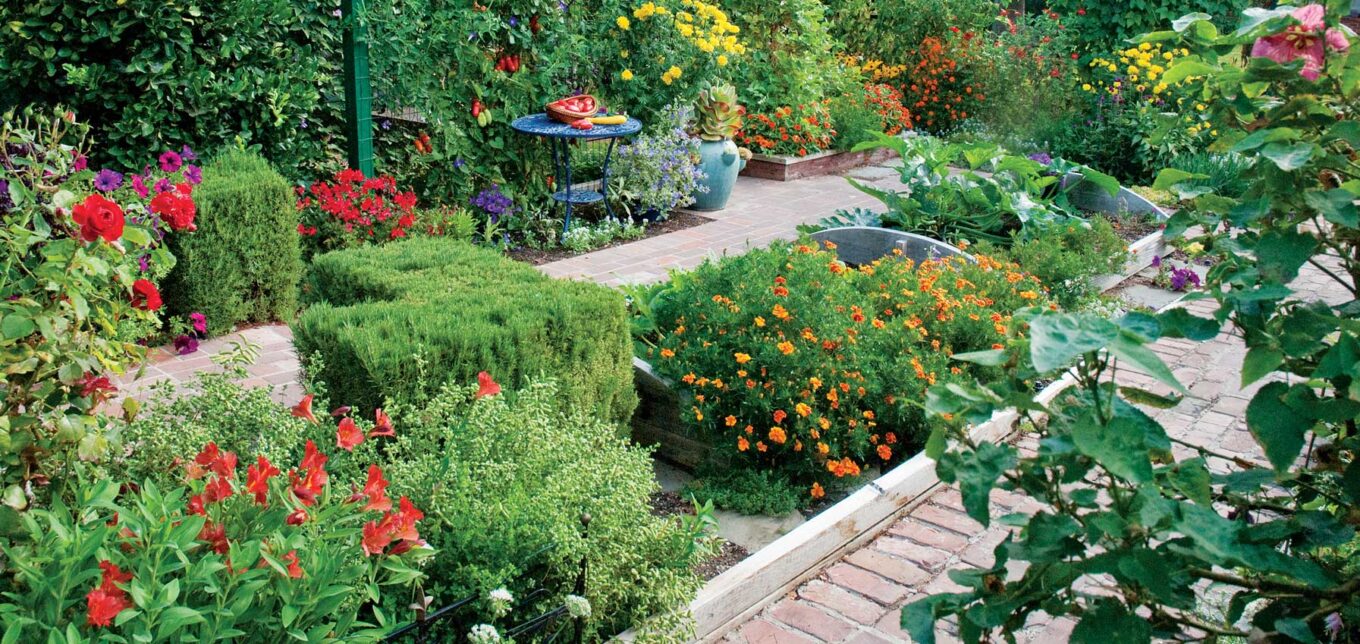Creating a thriving garden is an art, and combining flowers and vegetables can elevate it to a masterpiece. This synergistic approach not only enhances the aesthetic appeal of your outdoor space but also offers practical benefits like pest control, pollination enhancement, and improved soil health. By understanding the needs of both flowers and vegetables, you can design a garden that is both beautiful and bountiful. This guide will explore the best companion planting strategies, offering insights into how to maximize the advantages of this harmonious gardening method. Let’s delve into the world of integrated gardening and discover how to cultivate a flourishing and visually stunning landscape.
The Benefits of Companion Planting Flowers and Vegetables
Companion planting, the practice of growing different plants together for mutual benefit, is a cornerstone of successful flower and vegetable gardening. Here’s how it can help:
- Pest Control: Certain flowers repel harmful insects, protecting your vegetables.
- Pollination: Flowers attract pollinators like bees and butterflies, crucial for vegetable fruit production.
- Soil Health: Some plants improve soil structure and nutrient availability for their neighbors.
- Weed Suppression: Dense plantings of flowers and vegetables can reduce weed growth.
- Aesthetic Appeal: A mixed garden is visually appealing and adds diversity to your landscape.
Choosing the Right Flowers for Your Vegetable Garden
Selecting the right flowers is crucial for maximizing the benefits of companion planting. Consider these factors:
- Attractiveness to Pollinators: Choose flowers known to attract bees, butterflies, and other beneficial insects.
- Pest-Repelling Properties: Select flowers that deter common garden pests.
- Sunlight Requirements: Ensure the flowers have similar sunlight needs to your vegetables.
- Water Needs: Choose flowers that thrive in similar watering conditions as your vegetables.
- Growth Habits: Consider the size and spread of the flowers to avoid overshadowing your vegetables.
Popular Flower Choices and Their Benefits
Here are some excellent flower choices for vegetable gardens:
- Marigolds: Repel nematodes and other soil pests.
- Nasturtiums: Attract aphids away from vegetables and deter squash bugs.
- Sunflowers: Attract pollinators and provide support for climbing vegetables.
- Borage: Attracts beneficial insects and is edible.
- Lavender: Repels moths, fleas, flies, and mosquitoes.
Vegetable and Flower Combinations for Success
Here are some specific flower and vegetable pairings that work well together:
- Tomatoes and Basil/Marigolds: Basil improves tomato flavor and repels pests. Marigolds deter nematodes.
- Cucumbers and Nasturtiums: Nasturtiums deter squash bugs and cucumber beetles.
- Peppers and Borage: Borage attracts beneficial insects that prey on pepper pests.
- Cabbage and Rosemary: Rosemary deters cabbage moths.
- Lettuce and Calendula: Calendula attracts beneficial insects and repels aphids.
Tips for Planting Flowers and Vegetables Together
Follow these tips for successful integration:
- Plan your layout: Consider the mature size of both flowers and vegetables.
- Provide adequate spacing: Avoid overcrowding to ensure proper airflow and sunlight.
- Water and fertilize appropriately: Meet the specific needs of both flowers and vegetables.
- Monitor for pests and diseases: Address any issues promptly to prevent spread.
- Rotate crops: Rotate your planting locations each year to improve soil health.
FAQ: Common Questions About Flower and Vegetable Gardening
Q: Can I plant any flower with any vegetable?
A: While many combinations work well, some flowers can inhibit the growth of certain vegetables. Research specific pairings to ensure compatibility.
Q: How close should I plant flowers and vegetables together?
A: Consider the mature size of both plants. Generally, planting them a few inches to a foot apart is sufficient.
Q: Do I need to use special fertilizer for a mixed garden?
A: Use a balanced fertilizer that meets the needs of both flowers and vegetables. Organic options are often preferred.
Q: How often should I water my flower and vegetable garden?
A: Water deeply when the top inch of soil feels dry. Consider using drip irrigation to conserve water and reduce disease risk.
Q: What if my flowers attract too many bees?
A: Bees are essential for pollination. Avoid using pesticides that can harm them. If you are allergic to bees, consider planting flowers further away from high-traffic areas.

